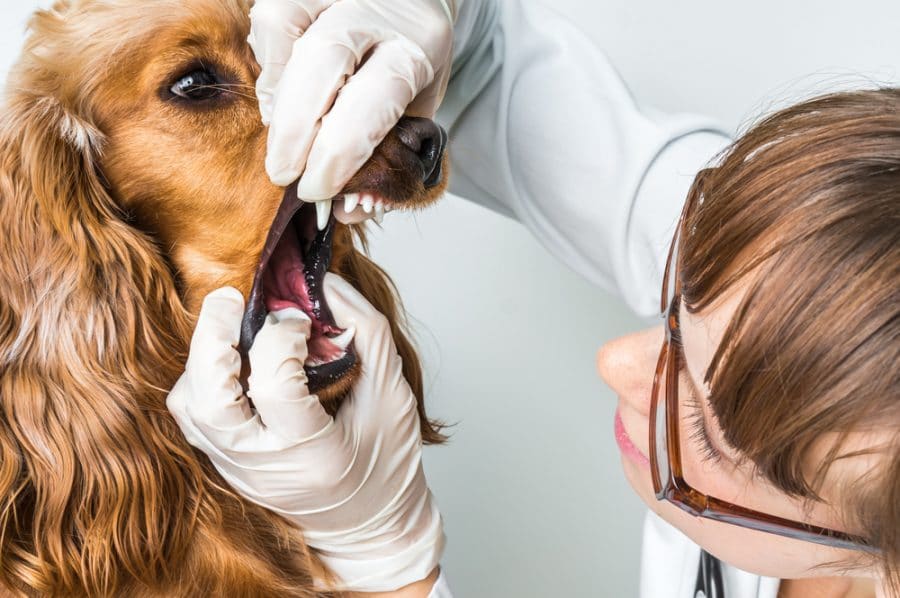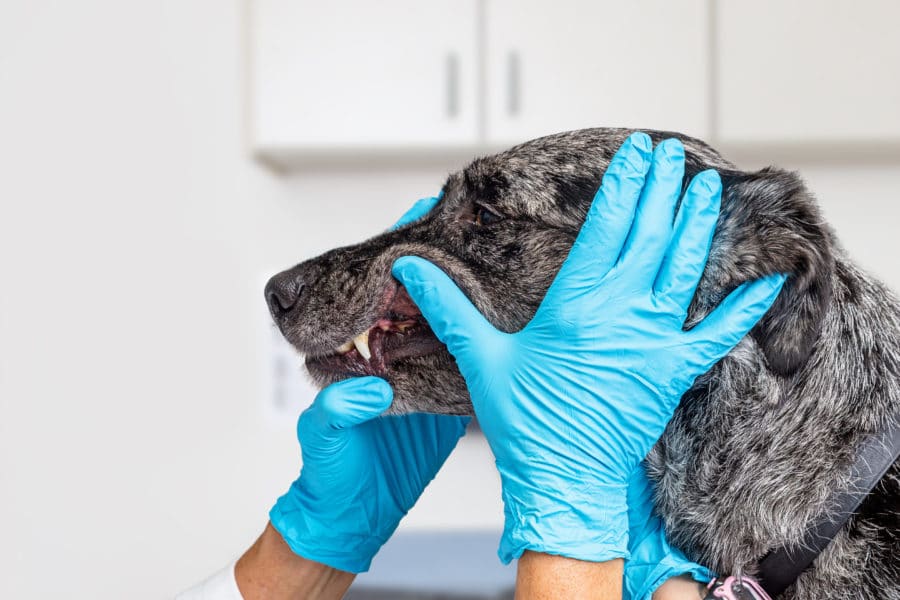As veterinary practitioners, it’s important to recognize the value of educating about proactive options that promote better oral health for cats and dogs.
It is well known that oral and dental health significantly affects overall systemic health in both animals and humans.1,2 Simply put, chronic disease in the mouth is a constant source of chronic inflammation and bacteria impacting the rest of the body. It is also important to note that periodontal disease is the single most common problem diagnosed in small animal patients.3,4 Yet oral disease is often overlooked when addressing chronic systemic disease. As integrative practitioners, it is extremely important that we recognize these facts when evaluating and treating our patients. It’s also vital that oral and dental health be considered when promoting preventative health and wellness.
Introducing host modulation
In the interest of integrative and proactive health, host modulation is an exciting new treatment approach in periodontal therapy for humans and animals.3 The term “host modulation” implies supporting the host (i.e. the whole patient) to control the body’s response to inflammation and infection. This is important because although plaque is considered the etiologic agent of periodontal disease, it is actually the body’s response to the plaque (i.e. the ensuing inflammatory cascade) that ultimately leads to periodontal disease and resultant bone loss, etc. If the acute inflammatory response can be resolved quickly, tissue injury is prevented; conversely, inadequate resolution and failure to return the tissues to homeostasis results in chronic inflammation and eventually periodontal disease.
There are many options available to affect host modulation and assist the body’s ability to combat gingival and general inflammation. Not surprisingly, supporting oral health starts with the same foundation as general health – i.e. diet and nutrition.
Diet and nutrition
Diet and nutrition choices are paramount to overall health, including dental health. Although most of us were taught to believe that dry pet foods are beneficial to dental health, this has been disproven in specific studies.4 In fact, most kibble is too small to require any chewing action, and even when chewed it provides minimal cleaning of calculus (tartar) and only on the incisal tips of the teeth. In other words, chewing kibble does not promote cleaner teeth at the gumline, where it really matters.
The myth about dry pet foods being good for dental health stemmed from the belief that tartar was the best indicator to assess the levels of oral disease. It is now known that gingival inflammation is a more accurate indicator. Beyond the fact that dry foods do not provide a mechanical “cleaning” benefit, they are also heavily processed via extrusion methods (high heat and pressure). Heavy processing creates AGEs (Advanced Glycation End Products), which are known to be pro-inflammatory. This means that heavily processed foods actually fuel inflammation in the body, including the mouth and oral tissues.
Consequently, un/low-processed, species-appropriate diets can be a critical piece of overall wellness, as well as oral health and general resistance to chronic inflammation. There is speculation that raw foods contain enzymes that also help with resistance to bacterial plaque, but this has not been proven in studies.
Raw meaty bones do provide an active chewing and gum-cleaning advantage. Cooking bones makes them more brittle, which creates the danger of potential splintering and GI perforation. Another concern regarding bones in general is the risk of damaging or breaking teeth. Veterinary dentists report that large raw bones, such as marrowbones, rarely cause broken teeth – unlike small, thin long bones and similar-shaped objects, which are common culprits in tooth damage. This has to do with canine oral anatomy and the physics of mastication as the dog’s teeth are positioned against the object being chewed. Larger bulky objects do not create the same angle and force on the carnassial teeth as do smaller and longer objects. In fact, common items found to break teeth are nylon bones, cooked bones, antlers, hooves, and bully sticks.
In addition to the impact diet type has on oral health, various nutrients and nutraceuticals can help modulate both oral and systemic inflammation.
Antioxidants
Recent studies have linked chronic oxidative stress with periodontal disease.5 Oxidative stress can be defined as free radical damage to the body’s cells and tissues. In fact, proper equilibrium between free radicals and antioxidants is now thought to be the main prerequisite for healthy periodontal tissues. As such, antioxidants can play an important role in periodontal health, and offer protective benefits.6
Numerous nutritional products are available for increasing antioxidant capacity. These can range from vitamin supplementation (such as vitamins C and E)7,8 preferably from food-based sources as opposed to synthetic vitamins; to specific products providing a more effective increase in total antioxidant capacity. In regards to systemically increasing antioxidant capacity, many recent studies have evaluated the Nrf2 pathway and its tremendous benefits to overall health. Nrf2 is a messenger protein that triggers a natural pathway in the body to stimulate the body’s own antioxidant production. These indirect internally produced antioxidants (vs direct, food-based, externally sourced antioxidants) include very powerful enzymes such as glutathione, superoxide dismutase (SOD) and catalase. These indirect antioxidants are known to be highly protective against free radicals and in reducing oxidative stress.9,10 Stimulating the Nrf2 pathway to create increased production of powerful antioxidants such as glutathione and SOD has benefits for periodontal disease (as well as more than 200 other diseases that have been linked to oxidative stress). A natural plant-based product with a canine specific formulation (Canine Health, LifeVantage; the human product version is also used in dogs, cats and horses), has shown the ability to effectively increase the body’s production of indirect antioxidants.11,12
Other nutraceuticals
Recent studies on the use of fatty acid supplements have shown beneficial results for periodontal inflammation.13-18 The anti-inflammatory actions of Omega-3 fatty acids are widely known for their joint benefits, but they have also been shown to support periodontal, heart, kidney and brain health too.
Furthermore, due to the high epithelial penetration of fatty acids, topical application appears to be very useful in the treatment of local oral inflammatory diseases, including periodontitis. In particular, 1-Tetradecanol Complex is an esterified monounsaturated fatty acid that has shown very positive effects when applied topically to the gingiva. Studies (in rabbits) demonstrated that it stopped the progression of periodontal disease and resulted in a significant reduction in periodontal inflammation, attachment and bone loss.14,15 In addition, histologic assessment found that it inhibited inflammatory cell infiltration and osteoclastic activity. This product (1-TDC, Elite Science) offers a proactive approach to support host resilience to inflammation, therefore minimizing progression into the periodontal disease cycle. (It is worthwhile to note that 1-Tetradecanol Complex also has a high affinity for joint and muscle/tendon/ligament tissues and is delivered to those tissues systemically after oral absorption or ingestion).
A deficiency of Coenzyme Q10 has been found in human patients with periodontal disease,16,17 and supplementation of CoQ10 (both systemic and topical) is shown to have beneficial effects on periodontal health.17-19 Ubiquinol is the bioactive form of CoQ10 and is therefore the preferred form to use as a dietary supplement. Folic acid is another nutrient studied for its effects on oral health, such as preserving gum tissue and reducing the incidence of gingivitis and periodontitis.18
In some patients, such as small breed dogs that are prone to periodontal disease, it may be beneficial to provide specific nutrients to support oral bone, connective tissue and immune system. One veterinary-labeled product (Standard Process VF-Biodent) has been designed to provide specific nutrients to support oral health.
Probiotics
The benefit of probiotics in supporting both gastrointestinal health and overall immune system function is a subject of growing focus. The mouth and oral cavity are part of the gastrointestinal tract. Furthermore, the body’s microbiome plays a critical role in systemic immune system function and in chronic inflammation. Recent information supports the use of probiotics both orally and topically to support oral health. Canine and human studies report significant results, with reduced probing depth of periodontal pockets and decreased periodontal inflammatory mediators, using orally ingested and topically applied probiotics.19 Topically applied beneficial bacteria will form colonies that create a healthier biofilm in the mouth and thus help crowd out the bacteria that cause the harmful inflammation leading to periodontal disease.
Active plaque removal
It would be remiss to not cover one the most effective proactive methods of supporting oral health, which takes us back to the basics of plaque removal. Regular professional dental cleanings are extremely helpful if they are done properly and performed with the patient under general anesthesia. It is estimated that 60% of oral pathology is located under the gumline, which means an awake exam (or attempt at cleaning) will miss the majority of disease problems. General anesthesia is required to perform a complete oral exam and to obtain dental x-rays to find pathology and address it.20, 21
The most effective way to achieve plaque removal via home care is with the mechanical action of regular tooth brushing.20 The product used on the toothbrush is not as important as the mechanical action of disrupting (wiping away) the plaque biofilm.
That said, a few natural products that can be helpful when applied directly on the gums or used on a toothbrush include coconut oil and/ or therapeutic grade essential oils. Coconut oil is rich in MCTs and lauric acid, making it antimicrobial in its own right, but it has also been shown to help draw out toxins when used on the gums (most notably with the process of “oil-pulling”, which is becoming increasing popular in human health care). Many essential oils (EOs) are known to be antimicrobial, anti-inflammatory, pain-relieving and/or specifically beneficial for oral tissues and mucus membranes. Medical literature supports the use of several different EOs for treatment of oral diseases. This list includes clove, lemon, orange, basil, eucalyptus, tea tree, myrrh and copaiba. It is important to note that only therapeutic grade oils from reputable manufacturers should be employed. Even with pure EOs, caution must be used with proper dilution, depending on the specific use, route of application, species and size of the patient. Most EOs should be diluted with fractionated coconut oil or other carrier oil, and proper references should be consulted for safe dosing and application techniques. A particular EO blend formulated specifically for gingival application to support oral health in dogs and cats (Dog Breath from animalEO) contains fractionated coconut oil, copaiba, peppermint, helichrysum and myrrh.
It can be expected that many pet owners are not likely to perform active dental care for their pets on a daily basis, but they are certainly more likely to make the effort if they are educated about the significant benefit it can provide to their pets’ quality of life (especially small breed dogs!). If more pet parents truly understood how much this daily routine could impact the health and longevity of their pets, compliance rates would be much higher.21
Conclusion
Current knowledge regarding the impact of periodontal disease on systemic health, and the role chronic inflammation plays in the progression of illness, has made it clear that maintaining a healthy mouth is a vital part of supporting whole body health and wellness. As integrative veterinary practitioners, it is important to recognize the value of educating pet parents about proactive options that promote better oral health for their dogs and cats.
References
1Niemiec BA. “Local and regional effects of periodontal disease”. Veterinary Periodontology, Niemiec BA, Ed., Jon Wiley and Sons, 69-80, 2012.
2Niemiec BA. “Systemic manifestations of periodontal disease”. Veterinary Periodontology, Niemiec BA, Ed., Jon Wiley and Sons, 80-91, 2012.
3Niemiec BA. “Host Modulation Therapies”. Veterinary Periodontology, Niemiec BA, Ed., Jon Wiley and Sons, 299-304, 2012.
4Harvey CE, Shofer FS, Laster L. “Correlation of diet, other chewing activities, and periodontal disease in North American client-owned dogs”. J Vet Dent. 13: 101-5, 1996.
5Dahiya P, Kamal R, Gupta R, Puri A. “Oxidative stress in chronic periodontitis”. Review Article, Chronicles of Young Scientists. 2(4):178-81, 2011.
6Pavlica Z, Petelin M, Nemec A, et al. “Measurement of total antioxidant capacity in gingival crevicular fluid and serum in dogs with periodontal disease”. Am J Vet Res. 65 (11)1584-8, 2004.
7Parrish JH Jr, DeMarco TJ, Bissada NF. “Vitamin E and periodontitis in the rat”. Oral Surg Oral Med Oral Pathol. 44(2):210-8, 1977.
8Kim JE, Shklar G. “The effect of vitamin E on the healing of gingival wounds in rats”. J Periodontol. 54(5):305-8, 1983.
9Hybertson BM, Gao B, Bose SK, et al. “Oxidative stress in health and disease: the therapeutic potential of Nrf2 activation”. Mol Aspects Med.32:234-6, 2011.
10Davis K. “Understanding antioxidants: using various arsenals to impact the oral environment”. Dent Today. 31(11):92, 94, 96-7, 2012.
11Nelson SK, Bose SK, Grunwald GK, Myhill P, McCord JM. “The induction of human superoxide dismutase and catalase in vivo: a fundamentally new approach to antioxidant therapy”. Jan 15;40(2):341-7, 2006.
12Bogaard HJ, Natarajan R, Henderson SC, et al. “Chronic pulmonary artery pressure elevation is insufficient to explain right heart failure”. Circulation. 17;120(20):1951-60, 2009.
13Kesavalu L, Vasudevan B, Raghu B, et al. “Omega-3 fatty acid effect on alveolar bone loss in rats.” J Dent Res. 85:648-652, 2006.
14Hasturk H, Goguet-Surmenian E, Blackwood A. “1-Tetradecanol complex: therapeutic actions in experimental periodontitis”. J Periodontol. 80(7):1103-13, 2009.
15Hasturk H, Jones VL, Andry C, Kantarci A. “1-Tetradecanol complex reduces progression of Porphyromonas gingivalis-induced experimental periodontitis in rabbits”. J Periodontol. 78(5):924-32, 2007.
16Littarru GP, Nakamura R, Ho L, Folkers K, Kuzell WC. “Deficiency of coenzyme Q 10 in gingival tissue from patients with periodontal disease”. Proc Natl Acad Sci U S A. 68(10):2332-5, 1971.
17Wilkinson EG, Arnold RM, Folkers K, Hansen I, Kishi H. “Bioenergetics in clinical medicine. II. Adjunctive treatment with coenzyme Q in periodontal therapy”. Res Commun Chem Pathol Pharmacol. 12(1):111-23, 1975.
18Stein GM, Lewis H. “Oral changes in a folic acid deficient patient precipitated by anticonvulsant drug therapy”. J Periodontol. 44(10):645-50, 1973.
19Lee JK, Kim SJ, Ko SH, Ouwehand AC, Ma DS. “Modulation of the host response by probiotic Lactobacillus brevis CD2 in experimental gingivitis”. Oral Dis. 2015 Sep;21(6):705-12. Epub 2015 Apr 20.
20Hale FA. “Home care for the veterinary dental patient”. J Vet Dent 20(1) 52-4, 2003.
21Wiggs RB, Lobprise HB. Periodontology, in Veterinary Dentistry, Principals and Practice. Philadelphia, PA, Lippincott – Raven, 1997, pp 186-231.
22Kangas, K. “A review of oxidative stress and the NRF2 pathway”. Review Article, Journal of the American Holistic Veterinary Medical Association. 44:8-13, 2016.






